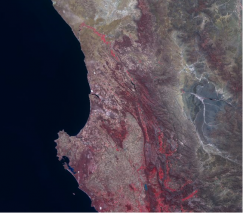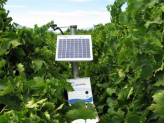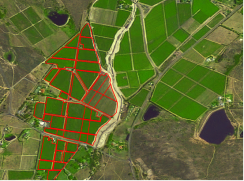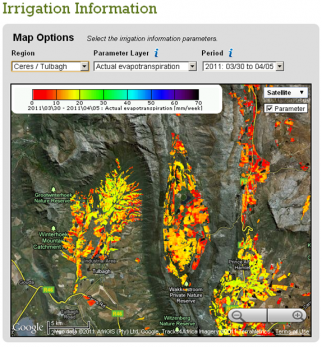Trees tell their own story to satellites
 Communications via satellite are changing the way the forest industry harvests trees. A new approach being tested by ESA combines satcoms and cellular services to relay important information almost immediately so that fewer trees are used to produce more timber.
Communications via satellite are changing the way the forest industry harvests trees. A new approach being tested by ESA combines satcoms and cellular services to relay important information almost immediately so that fewer trees are used to produce more timber.
Irish company Treemetrics, in cooperation with ESA, is developing a new system via the ARTES 3-4 SATMODO project. The SATMODO system will be used to provide a data back-haul and communications platform for harvesting vehicles, whereby the harvesting work flow can be managed in near realtime to deliver a fully integrated management system to customers.
Managers can now send instructions directly to computers in the vehicles via satellite, instructing operators how to cut to make the best use of the trees.
All trees are not created equal. Some are more suited to be used to make pulp, while others are better suited as 'sawlogs'. for cutting into timber in a sawmill, making them more valuable.
Such trees are greater in diameter, straighter and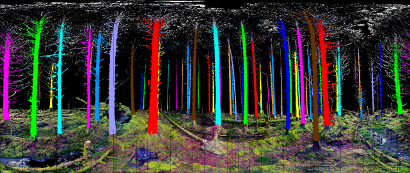 have fewer knots. Cutting down valuable sawlog trees for producing pulp is a waste and reduces the crop's worth.
have fewer knots. Cutting down valuable sawlog trees for producing pulp is a waste and reduces the crop's worth.
Treemetrics had already designed a new way to assess the value of a timber crop before harvest using 3D laser scanners to measure the shape, size and straightness of standing trees. The software produces .a cut instruction. file, based on the customer.s request, which tells the machine and its operator how to harvest the forest.
Until now, managers had to give harvesters the data they needed to cut trees via email, by phone, or face to face. Emailed information had to be manually entered into a control computer on the vehicle and uploaded every time the machine required a new instruction file.
 Now, thanks to satcoms, ESA provides the missing link in the chain: SATMODO's two-way realtime or near-realtime connection with the harvesting machines.
Now, thanks to satcoms, ESA provides the missing link in the chain: SATMODO's two-way realtime or near-realtime connection with the harvesting machines.
By gathering information on what the actual timber yield is per hectare and sending back this information through SATMODO, the actual harvest can be determined almost in real time and amended on the spot, rather than waiting until after the entire forest has been cut.
SATMODO consists of a hybrid satellite/terrestrial wireless device installed in the vehicle, transmitting data in real time via the new Inmarsat IsatM2M service supporting two-way burst messaging over worldwide satellite coverage (except the poles), using L-band remote terminals with highly compact antennae.
SATMODO also provides a communications 'safety net' for harvesters who frequently work in remote locations. It keeps workers in constant contact in areas where land-based mobile networks simply won't work.
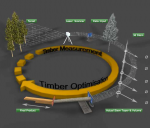 To test the SATMODO system, the hybrid device will be installed in 20 harvesting vehicles, allowing individual machines or groups of machines to be monitored. Harvesting workflow will be managed in near-realtime, creating a fully integrated management system.
To test the SATMODO system, the hybrid device will be installed in 20 harvesting vehicles, allowing individual machines or groups of machines to be monitored. Harvesting workflow will be managed in near-realtime, creating a fully integrated management system.
Based in Cork, Ireland and endorsed by Ireland's Minister for Research and Innovation, Mr. Seán Sherlock, Treemetrics has spent years developing measurement and analytics technology to replace traditional forestry methods.
The company approached ESA through its Integrated Applications programme to help develop their technology further through the use of satellites.
"ESA with its innovative integrated application platform is very pleased to support a great idea coming from this young entrepreneurship," said Amnon Ginati, the Head of the Integrated and Telecommunications-Related Applications Department at ESA.
"We are also very pleased with the endorsement that it is receiving both at a political level and from Enterprise Ireland."




 The control and surveillance of borders is an essential function of any state which if done efficiently, can lead to a reduction in cross-border crime and illegal migration.
The control and surveillance of borders is an essential function of any state which if done efficiently, can lead to a reduction in cross-border crime and illegal migration. During this proof of concept demonstration techniques for tracking patrols and distributing the information to commanders, the use of satellite communications, and Earth observation techniques were demonstrated. The Earth observation products included reference mapping, hot spot monitoring, and techniques to develop permeability mapping for the border area. These products were distributed to the field locations over satellite communications links.
During this proof of concept demonstration techniques for tracking patrols and distributing the information to commanders, the use of satellite communications, and Earth observation techniques were demonstrated. The Earth observation products included reference mapping, hot spot monitoring, and techniques to develop permeability mapping for the border area. These products were distributed to the field locations over satellite communications links.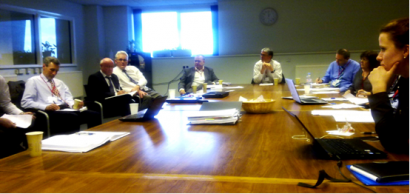

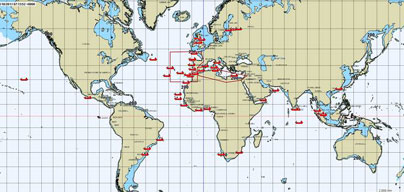 Selected offshore vessels within EU waters and beyond are now in sight of EU customs officials as an ESA demonstration project, in support to the European Maritime Safety Agencyâs Blue Belt pilot project, gets fully underway.
Selected offshore vessels within EU waters and beyond are now in sight of EU customs officials as an ESA demonstration project, in support to the European Maritime Safety Agencyâs Blue Belt pilot project, gets fully underway.
 IAP is pleased to announce the start-up of the Ambassador Platform for Dual-Use Space-based Services (APDUSS). The Ambassador Platform will be managed by the Office of the Advisor for Aerospace Activities in the Italian Ministry of Defence. The main objective will be to assist the IAP programme in spreading awareness for potential stakeholders in ESAâs IAP programme in the field of dual-use.
IAP is pleased to announce the start-up of the Ambassador Platform for Dual-Use Space-based Services (APDUSS). The Ambassador Platform will be managed by the Office of the Advisor for Aerospace Activities in the Italian Ministry of Defence. The main objective will be to assist the IAP programme in spreading awareness for potential stakeholders in ESAâs IAP programme in the field of dual-use.
